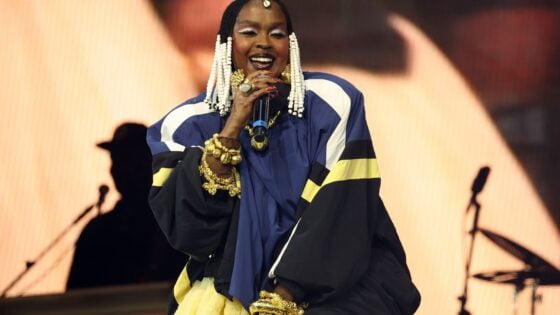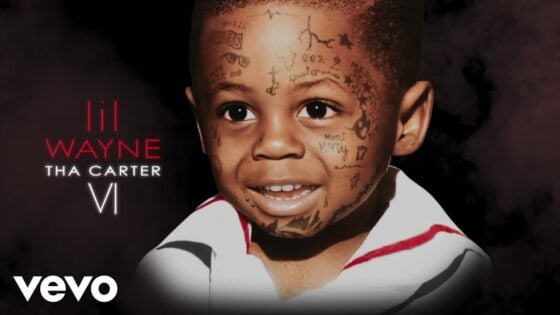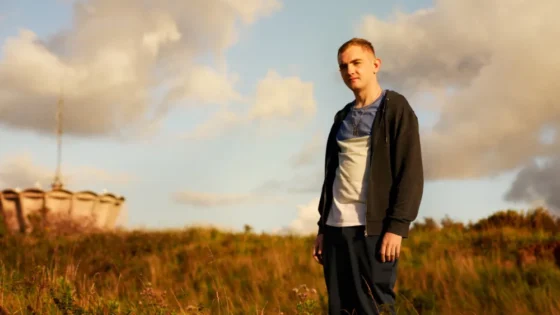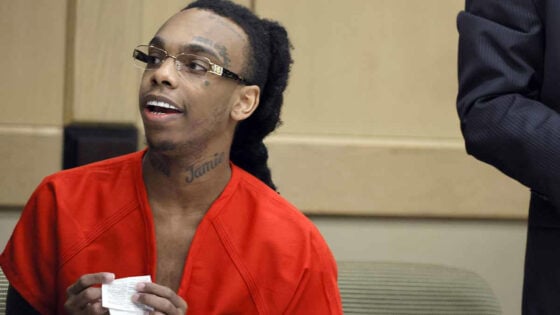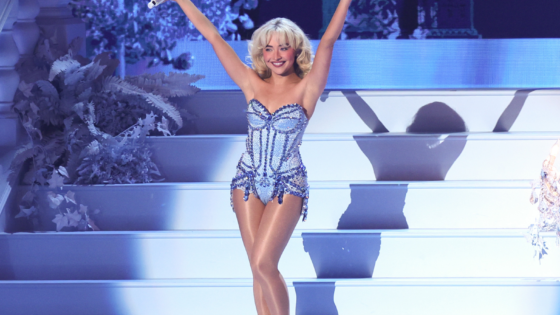Film
Defending The Star Wars Prequels: The Force is Stronger than Critics Suggest
One truth, one hate.
In Defence of the Star Wars Prequels
Back in the spring of 1999, which by now feels like a ‘Long time ago,…’, Star Wars fans the world over could not contain their excitement regarding the soon-to-be-released Episode 1: The Phantom Menace. They demonstrated greater energy in their anticipation than a Sith can demonstrate power through anger. Nothing in the world could have prepared them, and casual fans as well, for what they received in return for their patience on May 19th. Whilst a section of the hardcore fanbase persisted in believing that Episode I was a fine return the most famous of galaxies far, far away, most movie-going patrons outright disliked the film, or at least knew that the film had missed the mark in some crucial respects.
Expectations were thus tempered three years later when, in late spring of 2002, George Lucas presented those same fans with Episode II: Attack of the Clones. Announcement of the title months prior had seen it laughed off by many, and when the movie itself came to theatres on May 16th, many people laughed that off too. Either that or shook their head in shame, wishing that they could Force-throw their popcorn at the screen.
Lastly, in the spring of 2005, Lucas and company presented Episode III: Revenge of the Sith. Most fans and critics proclaimed it as the best of the series baptized as the ‘prequel trilogy’, although anyone being honest with themself knew that was not a very high bar to reach. Searching their feelings, they knew it to be true. What’s more, in the intervening years, more and more people, be it staunch or casual fans, agree that even though Episode III is the superior film, it is a flawed film, some of its warts appallingly obvious for all to see.
What is left, therefore is a series that started with a triumphant three and became a troubling sextet. All that being said, time has a funny way of being conducive to healing. When healing is not a viable possibility, sober second thought is another. The negative consensus remains, but there are little nuggets of positivity about what could have been given the foundation that exists within the films. This internet-wide Star Wars reminiscing prompted me to ponder just what episodes I, II, and III did get right despite popular perception. Rest assured, in no way will this article argue that the prequels are superior to the original three films. There will be no Jar Jar-type antics around these parts. That sort of folly will be left for someone that has truly embraced the Dark Side. Even so, it seems unfair to completely rule out any qualities I, II, and III have, which they do, however difficult they are to spot sometimes. What are these diamonds in the rough, you ask? Excellent question.

Star Wars: Episode I – The Phantom Menace
Interestingly enough, while this movie is often considered to be the lesser of an already mediocre bunch, Episode I possesses most of the interesting qualities and ideas had all the filmmaking-related ingredients come together. Here are a few reasons why the first film should be given a fairer shake. Readers should immediately note that the more obvious positives, such as Liam Neeson’s gravitas, John William’s score, and the awesomeness of Darth Maul will not be used as arguments. Of the few positives cited about The Phantom Menace, those ones are recurring.
Notwithstanding the actual text featured in the snore-inducing opening crawl, the concept is rather neat when one stops to think about it and how it operates in the grander scheme of things. The Trade Federation, headed by a cartel of bug-like aliens that seek only monetary gain but are ultimately controlled by a Sith Lord, are performing a planetary blockade of Naboo, a world home to a peace-loving society and vastly rich faun and flora, no to mention an entire civilization living underwater, the Gungans. What the movie presents is a battle, so to speak, between a beautifully stylized world with many natural and organic qualities about it and a sect characterized by the cold of space, of machinery, and folks that evidently could not care less about the finer things in life. Case in point, when the Federation invades Naboo, its titanic vehicles storm through the forests, destroying much in their path. Is this philosophical struggle between environmentalism and technological advancement at all costs an original idea? Not in the slightest, but a noble one nevertheless, not to mention a thinly veiled, easily acceptable political statement, not something the original films were known for having.

On a more plot-related level, Lord Sidious’ blockade attempt is a sneakily interesting, clever way to usurp political power as Palpatine (essentially Sidious’ alter ego…or the other way around), presently a Naboo senator on the capital planet of Coruscant. If one is to be calculating and smooth when vying to become the most powerful man in the galaxy, then one must be smart about it. Hitler himself preyed on the broken pride of the German people in the leadup to acquiring office. He didn’t speak of building concentration camps to destroy the Jewish people right off the bat. Palpatine/Sidious is an evil fellow and a sneaky bugger at that. Consider his strategy: create a minor controversy on a distant planet that doesn’t appear to be all that important, yet use the sympathy of fellow senators to strike a vote of no confidence in the current chancellor. He is essentially playing the victim card as any good politician would. What’s more, he’s doing it for a planet that is never described as being particularly relevant in galaxy-wide happenings. It’s quite clever, really.

Many have bemoaned the battle droids present in the prequels, their curious place felt most strongly in Episode I as the dominant Trade Federation force. Looking thin and brittle, especially when tasked with facing Jedi like Qui-Gon Jinn and Obi-Wan Kenobi, the battle droids appear to be a comically inept force, incapable of doing any harm. On the flip side, there are a lot of them, so much so that even the well-equipped and large Gungan army in the film’s climax cannot overpower them. Destroy a handful, two handfuls will come at you immediately after, row after row. They represent strength in numbers despite that, on their own, they wouldn’t strike fear in anybody. When one small spider crawls on the wall, few would panic. Enter a dilapidated room where spiders are everywhere, and most would rather turn around and flee. More pertinent still is the fact that they are robots. There is no human face to them, nothing relatable. Produced on an assembly line in a factory (as will be revealed in Episode II, although it was easy to guess already), they are set loose by the truckload at the behest of the Trade Federation and Darth Sidious, representing the perfect foe for heroes like the Jedi and the beautiful, passionate Padmé.

Star Wars: Episode II – Attack of the Clones
Ah, the much troubled middle chapter. Troubled indeed, for this second episode, arguably because it does not really have much of a proper beginning or conclusion, is a bit more barren when it comes to hidden gems. It is a pit stop towards the more dramatic final adventure, a bridge that takes the protagonist and antagonists from points A to Z. Even so, there are some notably pertinent elements that are often quickly used as the brunt of bad jokes and easy complaints by many.
Episode II is really the first time that audiences get to discover what the Jedi and their code is all about. These were hinted at in the previous installment, but with Anakin, now a Jedi and one of the picture’s most important characters, the movie can now properly delve into what life as a Jedi is like. This is, among other things, what fans wanted after all: to witness the era when Jedi were everywhere, to see them in their element.
And it is a terrible environment.
Jedi can apparently not emotionally attach themselves to people, a tall order to ask anyone with an inkling for human bonding, a rather natural and necessary aspect to building a free and loving society. On first glance, being told that the Jedi are forbidden to engage in serious relationships, be they platonic or romantic, feels like a cheap way to formulate that ‘forbidden’ romance that will bud between Anakin and Padmé. What’s more, it flies in the face of how a regular person could be capable of living. How does this operate in the film’s favour? It does so by revealing how backwards the Jedi way of thinking is. Yes, their lightsabers and the sounds they emit are cool, their Force powers equally so, but the whole business about not being able to demonstrate love is preposterous. Where this comes into play rather nicely is Anakin’s current circumstances. He is growing older and slightly more mature, yet remains one of the younger Jedi Knights around. Much pressure is put on his shoulders, most of it stemming from the ‘prophecy’ the Jedi Masters keep prattling on about. However potentially great a Jedi Anakin might become, he is, well, human, and therefore prone to typical human folly, such as falling in love. When so much is demanded of him and so much is forbidden that feels natural (clue: because it is), it makes sense for a supposed legendary, god-like Force wielder to start feeling the pressure and crack under it.

In essence, the flashy cool stuff the Jedi can show off can only do so much at masking the stupidity of their code, a code that, in many ways, proves to be their downfall. Whether that story point is something fans wanted can be debated until the cows come home considering how, for years and years, they thought being a Jedi was the greatest thing in the galaxy. Episode II takes a controversial stance by positing that it can be the greatest thing in the galaxy, but, as with most things in life, imperfection permeates. Politicians, doctors, soldiers, firefighters, and police officers can all engage in love but not the formerly perceived coolest people? It sounds completely ridiculous, and that’s precisely what actually makes it a rather audacious decision on Lucas’ part.
On a briefer note, the entrance of the clones into the fray is another curiously apt decision. While the whole storyline concerning Jango and Boba Fett’s involvement is ultimately superfluous and does little to advance the story, the idea of the Republic, and Palpatine in particular, utilizing clones as its defensive line is thematically rich insofar as it simultaneously mirrors the robotic battle regiments of the separatist forces whilst contrasting them. On one hand, the clones are modeled after a regular human being. Because of that, they are slightly more relatable than the droids. It is easier to side with a force that actually has a face and a voice than a bunch of vapid machines. Even more important, it makes it easier for the Republic and the Senate to put their trust in the clone army too. Conversely, none of that changes the fact these people are no more than bio-engineered creations that all look alike, emphasizing the point that Palpatine is essentially orchestrating a war that will destroy democracy by pitting two weirdly monolithic forces against one another. Once again, the storytelling decisions opted for by creator George Lucas do, when push comes to shove, go against the easily enjoyable romanticism of the original trilogy. However, to describe them as nothing more than ill-thought-out and lacking depth without second thought amounts to lazy criticism.

Star Wars: Episode III – Revenge of the Sith
The concluding chapter in the prequel trilogy presents fewer original ideas but does a solid job at enforcing and further crystalizing those presented originally in episodes I and II.
At the time of the movie’s release, the U.S. federal political scene had been run by the George W. Bush administration for a few years already, with all the controversial baggage it created widely scrutinized and criticized by pundits and regular observers alike. With Revenge of the Sith, Lucas decides to hammer home the idea of an influential man, in this case, Sidious/Palpatine, using the democratic tools of the political system to implement non-democratic strategies, very much mirroring the fumbles and foils of the unpopular Bush administrations. Passions are at their peak during wartime, and with victory so nearly in the Republic’s grasp (little do the ordinary politicians know they are being duped), they are willing to into the deep end with Palpatine, the latter orchestrating everything behind the scenes as Darth Sidious. Episode III is the space opera interpretation of how democratic structures can flounder when people stop using their brains and rely on knee-jerk reactions, which is all too often the case when war breaks out. Granted, it can be argued that Palpatine is using the Force to do most of the damage in the Senate, thus simplifying the whole point, yet since the point is never explicitly made, it leaves just enough room for the aforementioned interpretation. Also, mind-controlling that many people in the Senate at the same time would be quite the feat, one even Darth Sidious doesn’t seem capable of, certainly judging by how Padmé and Bail Organa appear to have their senses about them.
Most of Episode III falls more in line with the easily consumed swashbuckling adventurism of the original trilogy, albeit concluding on a far more somber note. The one other element that undercuts that is the guidance Yoda offers Anakin shortly after his return to Coruscant following a daredevil rescue mission to retrieve Chancellor Palpatine. The troubled Jedi admits to being haunted by dreams and conflicting emotions. All Yoda can muster as reassurance is to encourage Anakin in pursuing his quest to let go of his attachments. Worse still, he has to gall to instruct Anakin, already prone to have his feelings hurt, to not mourn the passing of loved ones, to immediately move on to the next thing. If the Jedi teachings espoused in Attack of the Clones did not make the case obvious enough, it certainly is by Revenge of the Sith. The Jedi Order is so clearly up on its high horse and full of itself that it believes its pupils and practitioners can essentially be non-human, something many non-religious people would argue theology does to those that choose that sort of path. It is a misplaced, misused sense of pride and power that does them in in the end. It flies in the face of what fans were probably expecting at the time when the prequel trilogy was announced, thus making it all seem even worse than it actually is.

All of this definitely reflected the cynical political sentiments felt at the time in the United States as well as other countries, sentiments that have not entirely been swayed even though regimes have long changed. Creaky acting and questionable effects shots aside, Episode III is heavy in political potency, none of it especially positive, granted, but that alone makes it one of the more intellectually interesting Star Wars movies of them all. How often does anybody build that sort of a case about Episode III?
Do the arguments presented here mean that the prequel trilogy is far better than most take them to be? Well, as Obi-Wan Kenobi would say, from a certain point of view, yes. There was evidently some thought put into how certain characters were to plan their course of actions throughout the three films, as well as how other characters would suffer the consequences of said actions. In a nutshell, The Phantom Menace, Attack of the Clones, and Revenge of the Sith are quite fascinating to inspect intellectually if one has any inclinations towards the thematic texture of movies, even special effects-driven space operas. There is little doubt that anybody with time on their hands can muster some compelling arguments as to why most of what is included in this article is hogwash, but that’s what makes debating about movies so much fun. However open to interpretation the cases presently made are, by closely observing the text, they are still relatively sound.
Now if only the three movies had good acting, dialogue, direction, pacing and special effects to really hammer home my points…Well, for those there’s always The Empire Strikes Back.
That’s just a damn good story with all the bells and whistles!
-Edgar Chaput
Editor’s Note: This article was originally published under our old brand, Sound On Sight.



